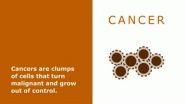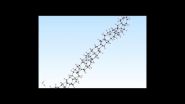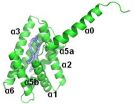(Press-News.org) Want to understand why cancer cells metastasize? Think of Sparta.
Ancient Greek warriors were fed a special diet that better prepared them for the demands of battle on distant fields. Cancer cells that metastasize may do the same thing according to a new study revealing previously unknown differences between cancer cells that continue to grow at the original tumor site, and those that travel to other organs.
Given that a cancer cell's unyielding ability to metastasize is the primary cause of cancer-related death, understanding how they successfully migrate can be lifesaving.
Scientists at The University of Texas MD Anderson Cancer Center have found that cancer cells traveling to other sites have different energy needs from their "stay-at-home" siblings which continue to proliferate at the original tumor site. The study results are in the Sept. 21 online edition of Nature Cell Biology.
The reason may lie with the protein, PGC-1α, a type of transcription co-activator crucial to regulation of cellular metabolism. PGC-1α appears to play a role in how cancer cells are able to acquire unique energy sources that allow them to travel and spread cancer in the body.
"New therapy strategies are beginning to focus on the unique vulnerabilities of cancer cell metabolism. Determining the metabolic requirements of invasive cancer cells could be of therapeutic value," said Valerie LeBleu, Ph.D., assistant professor of cancer biology at MD Anderson and lead author of the Nature Cell Biology paper. "We found that invading cancer cells rely on mitochondria during their transition to other cancer sites."
Cancer cells use PGC-1α to stimulate the growth of new mitochondria, the cell's "power plants" that generate ATP, an energy "currency" used by cells to grow. Metastasizing cells also rely on PGC-1α for a process known as oxidative phosphorylation that boosts ATP during the cell's journey to other sites. If mitochondria is the kitchen, then PGC-1α is the chef, ATP the entreé and oxidative phosphorylation a key ingredient. This overall process, mitochondria respiration, allows some cancer cells to harness the required energy to survive the hostile journey through tumor and normal issue, blood vessels, and entry into new organs.
In other words, some cancer cells are programmed to eat at home, while others have a special diet that allows them to travel to other sites. If there was a therapeutic way to stop the migrating cells from packing a lunch ahead of time, it could potentially halt their journey. Suppressing PGC-1α appears to accomplish this.
"The most dangerous cancer cells are the ones that can efficiently move and find a new home," said Raghu Kalluri, M.D., Ph.D., chair of cancer biology and an investigator on the study. "The study revealed a strong correlation between PGC-1α expression in invasive cancer cells and the formation of distant metastases in breast cancer patients."
INFORMATION:
Other co-authors included Joyce O'Connell, Ph.D., and John Asara, Ph.D., Beth Israel Deaconess Medical Center, Boson, Ma.; Karina Gonzalez Herrera, Ph.D., and Marcia Haigis, Ph.D., Harvard Medical School, Boston, Ma.; Harriet Wikman, Ph.D., and Klaus Pantel, M.D., University Medical Center Hamburg-Eppendorf, Hamburg, Germany; and Fernanda Machada de Carvalho, Ph.D., Aline Damascena, Ludmilla Thome Domingos Chinen, Ph.D., and Rafael Rocha, Ph.D., Camargo Cancer Center, Sao Paulo, Brazil.
The study was funded by the Cancer Prevention and Research Institute of Texas, MD Anderson Cancer Center, the Department of Defense Cancer Research Predoctoral Traineeship Award (W81XWH-09-1-0008). Kalluri is also funded by the National Institutes of Health (CA 125550, CA 1555370, CA 151925, DK081576, DK055001, CA12096405, and CA00651646).
Cancer cells adapt energy needs to spread illness to other organs
MD Anderson study suggests new therapy approach for breast cancer
2014-09-21
ELSE PRESS RELEASES FROM THIS DATE:
Stanford researchers create 'evolved' protein that may stop cancer from spreading
2014-09-21
VIDEO:
Early but promising tests in lab mice suggest that a bioengineered 'decoy' protein, administered intravenously, can halt the spread of cancer from the original tumor site. Years of subsequent tests...
Click here for more information.
A team of Stanford researchers has developed a protein therapy that disrupts the process that causes cancer cells to break away from original tumor sites, travel through the blood stream and start aggressive new growths elsewhere in the body.
This ...
Smallest possible diamonds form ultra-thin nanothreads
2014-09-21
VIDEO:
For the first time, scientists have discovered how to produce ultra-thin 'diamond nanothreads' that promise extraordinary properties, including strength and stiffness greater than that of today's strongest nanotubes and polymers....
Click here for more information.
For the first time, scientists have discovered how to produce ultra-thin "diamond nanothreads" that promise extraordinary properties, including strength and stiffness greater than that of today's strongest ...
New cancer drug target involving lipid chemical messengers
2014-09-19
PHILADELPHIA — More than half of human cancers have abnormally upregulated chemical signals related to lipid metabolism, yet how these signals are controlled during tumor formation is not fully understood.
Youhai Chen, PhD, MD, and Svetlana Fayngerts, PhD, both researchers in the department of Pathology and Laboratory Medicine at the Perelman School of Medicine, University of Pennsylvania, and colleagues report that TIPE3, a newly described oncogenic protein, promotes cancer by targeting these pathways.
Lipid second messengers play cardinal roles in relaying and amplifying ...
Melanoma risk found to have genetic determinant
2014-09-19
(Lebanon, NH 9/18/14)— A leading Dartmouth researcher, working with The Melanoma Genetics Consortium, GenoMEL, an international research consortium, co-authored a paper published today in the Journal of the National Cancer Institute that proves longer telomeres increase the risk of melanoma.
"For the first time, we have established that the genes controlling the length of these telomeres play a part in the risk of developing melanoma," said lead author of the study Mark Iles, PhD, School of Medicine at the University of Leeds (UK).
Telomeres are a part of the genome ...
UChicago-Argonne National Lab team improves solar-cell efficiency
2014-09-19
New light has been shed on solar power generation using devices made with polymers, thanks to a collaboration between scientists in the University of Chicago's chemistry department, the Institute for Molecular Engineering, and Argonne National Laboratory.
Researchers identified a new polymer — a type of large molecule that forms plastics and other familiar materials — which improved the efficiency of solar cells. The group also determined the method by which the polymer improved the cells' efficiency. The polymer allowed electrical charges to move more easily throughout ...
Research predicts possible 6,800 new Ebola cases this month
2014-09-19
Tempe, Ariz. (Sept. 19, 2014) - New research published today in the online journal PLoS Outbreaks predicts new Ebola cases could reach 6,800 in West Africa by the end of the month if new control measures are not enacted.
Arizona State University and Harvard University researchers also discovered through modelling analysis that the rate of rise in cases significantly increased in August in Liberia and Guinea, around the time that a mass quarantine was put in place, indicating that the mass quarantine efforts may have made the outbreak worse than it would have been otherwise. ...
Domestic violence likely more frequent for same-sex couples
2014-09-19
CHICAGO --- Domestic violence occurs at least as frequently, and likely even more so, between same-sex couples compared to opposite-sex couples, according to a review of literature by Northwestern Medicine scientists.
Previous studies, when analyzed together, indicate that domestic violence affects 25 percent to 75 percent of lesbian, gay and bisexual individuals. However, a lack of representative data and underreporting of abuse paints an incomplete picture of the true landscape, suggesting even higher rates. An estimated one in four heterosexual women experience domestic ...
A better way to track emerging cell therapies using MRIs
2014-09-19
Cellular therapeutics – using intact cells to treat and cure disease – is a hugely promising new approach in medicine but it is hindered by the inability of doctors and scientists to effectively track the movements, destination and persistence of these cells in patients without resorting to invasive procedures, like tissue sampling.
In a paper published September 17 in the online journal Magnetic Resonance in Medicine, researchers at the University of California, San Diego School of Medicine, University of Pittsburgh and elsewhere describe the first human tests of using ...
NASA catches a weaker Edouard, headed toward Azores
2014-09-19
NASA's Aqua satellite passed over the Atlantic Ocean and captured a picture of Tropical Storm Edouard as it continues to weaken. The National Hurricane Center expects Edouard to affect the western Azores over the next two days.
NASA's Aqua satellite flew over Tropical Storm Edouard on Sept. 18 at 1:45 p.m. EDT and the Moderate Resolution Imaging Spectroradiometer (MODIS) instrument took a visible picture that showed the eye had disappeared and the bulk of clouds pushed east of center.
At 5 a.m. EDT on Sept. 19, Edouard's maximum sustained winds had decreased to near ...
NASA, NOAA satellites show Odile's remnant romp through southern US
2014-09-19
Former Hurricane Odile may be a bad memory for Baja California, but the remnants have moved over New Mexico and Texas where they are expected to bring rainfall there. NASA's TRMM satellite measured Odile's heavy rainfall rates on Sept. 18, and NOAA's GOES-West satellite saw the clouds associated with the former storm continue to linger over the U.S. Southwest on Sept. 19.
The remnants of Hurricane Odile were dropping heavy rain in the area from southern Arizona to western Texas when NASA-JAXA's Tropical Rainfall Measuring Mission or TRMM satellite flew over on September ...
LAST 30 PRESS RELEASES:
Numbers in our sights affect how we perceive space
SIMJ announces global collaborative book project in commemoration of its 75th anniversary
Air pollution exposure and birth weight
Obstructive sleep apnea risk and mental health conditions among older adults
How talking slows eye movements behind the wheel
The Ceramic Society of Japan’s Oxoate Ceramics Research Association launches new international book project
Heart-brain connection: international study reveals the role of the vagus nerve in keeping the heart young
Researchers identify Rb1 as a predictive biomarker for a new therapeutic strategy in some breast cancers
Survey reveals ethical gaps slowing AI adoption in pediatric surgery
Stimulant ADHD medications work differently than thought
AI overestimates how smart people are, according to HSE economists
HSE researchers create genome-wide map of quadruplexes
Scientists boost cell "powerhouses" to burn more calories
Automatic label checking: The missing step in making reliable medical AI
Low daily alcohol intake linked to 50% heightened mouth cancer risk in India
American Meteorological Society announces Rick Spinrad as 2026 President-Elect
Biomass-based carbon capture spotlighted in newly released global climate webinar recording
Illuminating invisible nano pollutants: advanced bioimaging tracks the full journey of emerging nanoscale contaminants in living systems
How does age affect recovery from spinal cord injury?
Novel AI tool offers prognosis for patients with head and neck cancer
Fathers’ microplastic exposure tied to their children’s metabolic problems
Research validates laboratory model for studying high-grade serous ovarian cancer
SIR 2026 delivers transformative breakthroughs in minimally invasive medicine to improve patient care
Stem Cell Reports most downloaded papers of 2025 highlight the breadth and impact of stem cell research
Oxford-led study estimates NHS spends around 3% of its primary and secondary care budget on the health impacts of heat and cold in England
A researcher’s long quest leads to a smart composite breakthrough
Urban wild bees act as “microbial sensors” of city health.
New study finds where you live affects recovery after a hip fracture
Forecasting the impact of fully automated vehicle adoption on US road traffic injuries
Alcohol-related hospitalizations from 2016 to 2022
[Press-News.org] Cancer cells adapt energy needs to spread illness to other organsMD Anderson study suggests new therapy approach for breast cancer






